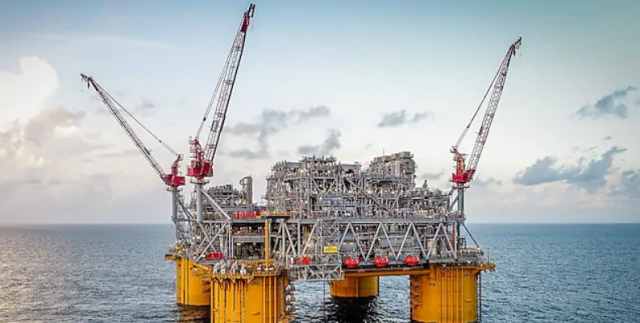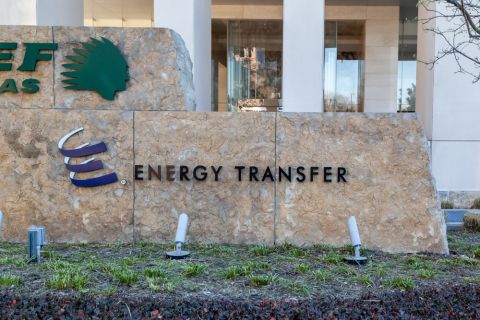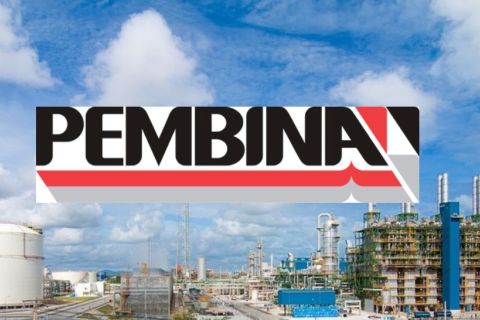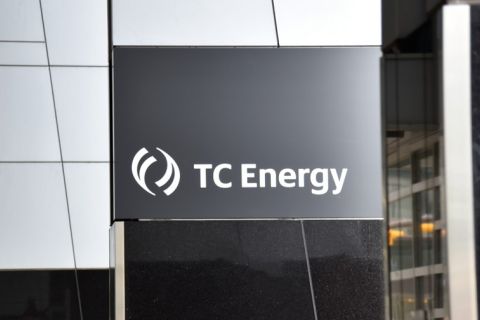
Shell's Appomattox floating production system i the Gulf of Mexico. (Source: Royal Dutch Shell)
HOUSTON—Royal Dutch Shell subsidiary Shell Offshore Inc. said on May 23 that it had started up its Appomattox project in the deepwater U.S. Gulf of Mexico (GoM) several months ahead of schedule.
Start-up of the project opens up a new deepwater frontier in the region, as the first commercial discovery in the Norphlet formation to be brought into production.
The Appomattox floating production system (FPS) is expected to achieve output of 175,000 barrels of oil equivalent (boe/d), making it one of the largest projects to be brought online in the GoM in recent years. It is also Shell’s largest floating platform in the region, with its hull weighing 40,000 metric tons.
Shell operates Appomattox with a 79% interest, while the remaining 21% stake is held by CNOOC Petroleum Offshore USA Inc., a subsidiary of China’s CNOOC Limited. Jefferies analysts said recent start-ups at Appomattox, Lula North in Brazil and the Prelude LNG project in Australia are expected to add $5 billion to Shell’s cash flow by 2020.
The Appomattox project is located 130 km (80 miles) offshore Louisiana, in water depths of 2,255 m (7,400 ft). It will produce oil from two fields—Appomattox and Vicksburg. Shell discovered the Appomattox field in 2010, followed by Vicksburg in 2013.
The final investment decision (FID) on the project was made in 2015, by which point U.S. benchmark crude prices had already fallen below $60/bbl. Since the FID was taken, Shell has managed to reduce the costs of the project by around 40%, which the company has attributed to “optimized development planning, better designs and fabrication, and expert drilling execution”. These efforts include roughly halving the cost of drilling wells—of which Appomattox has 20—through batch drilling and other techniques. This is part of a broader trend of deepwater producers increasingly turning to standardization and the pursuit of other efficiency gains in order to improve the economics of offshore projects.
“That Appomattox was safely brought online ahead of schedule and far under budget is a testament to our ongoing commitment to drive down costs through efficiency improvements during execution,” Shell’s upstream director, Andy Brown, said in a statement. “Appomattox creates a core long-term hub for Shell in the Norphlet through which we can tie back several already discovered fields, as well as future discoveries.”
According to Shell’s website, it is the only deepwater Gulf operator with commercial discoveries in the Norphlet, which also include Rydberg and Ft. Sumter.
Shell is among the most active players in the deepwater Gulf. It is also one of the largest deepwater producers in the world, and has recently said it is on track to achieve 900,000 bbl/d from its offshore operations by 2020. Shell’s deepwater focus bucks the trend of operators selling offshore acreage in order to prioritize shale drilling. Indeed, even fellow super-majors Exxon Mobil Corp. and Chevron Corp. are ramping up their shale operations dramatically. But Shell’s pursuit of offshore growth comes amid warnings that shale’s eventual decline will coincide with a rise in global demand in the coming years.
The International Energy Agency (IEA) has projected in its most recent annual oil market forecast that global demand will rise by 1.2 million barrels per day on average each year until 2024. The agency has been among the most vocal organizations warning that investment in new megaprojects —such as those in deepwater regions—needs to ramp up dramatically to meet an expected future supply shortfall.
Shell is among the companies that seems to be heeding this warning and targeting long-term production prospects. This includes new projects in the Gulf —in both U.S. and Mexican waters. The company’s Perdido hub is located close to the maritime boundary with Mexico, and the area is thought to have considerable oil potential.
At the Association of International Petroleum Negotiators (AIPN) International Petroleum Summit, held in Houston on May 21-23, Shell’s exploration manager for Mexico, Kartik Mutnuri, talked about the company’s deepwater position in that country.
“Mexico doesn’t have deepwater production, so it’s a bit more uncertain—more risk,” he told delegates in a presentation on how to identify deepwater investment opportunities. “We think Mexico has potential, and when I say we, it’s industry.”
He also warned that there were unknowns on the fiscal side as well as in terms of subsurface quality. Nonetheless, Shell is planning to apply its deepwater expertise from Perdido and beyond to its Mexican acreage. The supermajor has nine deepwater blocks and two shallow-water blocks in Mexican waters, and intends to drill 10 or more wells there in the next two to three years according to Mutnuri.
In the U.S., portion of the GoM, Shell is also forging ahead with further development. The company hopes that as well as opening up the Norphlet, Appomattox will set a new standard for bringing deepwater megaprojects online at a considerably reduced cost.
“The success we had in the development of this project has provided a model for how we find cost savings while building efficiencies into offshore projects of the future,” Shell’s project manager for Appomattox, Marno de Jong, said recently. The ability to replicate this model could prove crucial to longer-term efforts to keep pace with demand growth.
Recommended Reading
EQT CEO: Biden's LNG Pause Mirrors Midstream ‘Playbook’ of Delay, Doubt
2024-02-06 - At a Congressional hearing, EQT CEO Toby Rice blasted the Biden administration and said the same tactics used to stifle pipeline construction—by introducing delays and uncertainty—appear to be behind President Joe Biden’s pause on LNG terminal permitting.
Phillips 66 Explores Sale of Pipeline Stake Worth Over $1B, Sources Say
2024-03-26 - The Rockies Express Pipeline is a 2730-km interstate natural gas pipeline stretching from Wyoming and Colorado in the West to Ohio.
Scathing Court Ruling Hits Energy Transfer’s Louisiana Legal Disputes
2024-04-17 - A recent Energy Transfer filing with FERC may signal a change in strategy, an analyst says.
Pembina Pipeline Enters Ethane-Supply Agreement, Slow Walks LNG Project
2024-02-26 - Canadian midstream company Pembina Pipeline also said it would hold off on new LNG terminal decision in a fourth quarter earnings call.
TC Energy’s Keystone Back Online After Temporary Service Halt
2024-03-10 - As Canada’s pipeline network runs full, producers are anxious for the Trans Mountain Expansion to come online.





